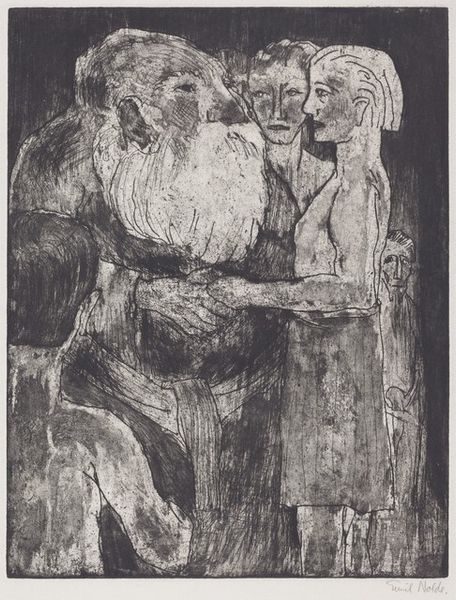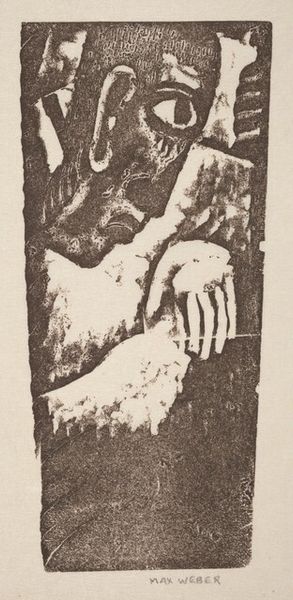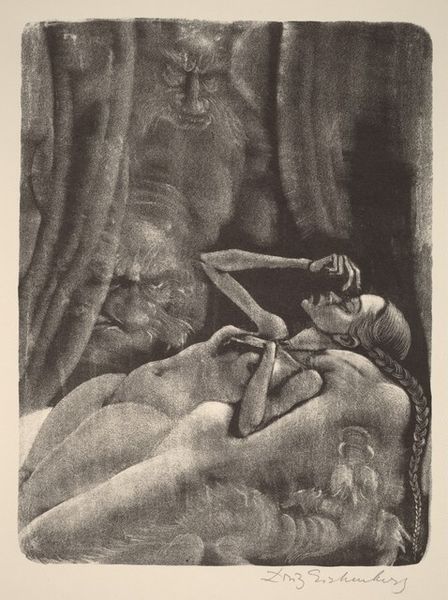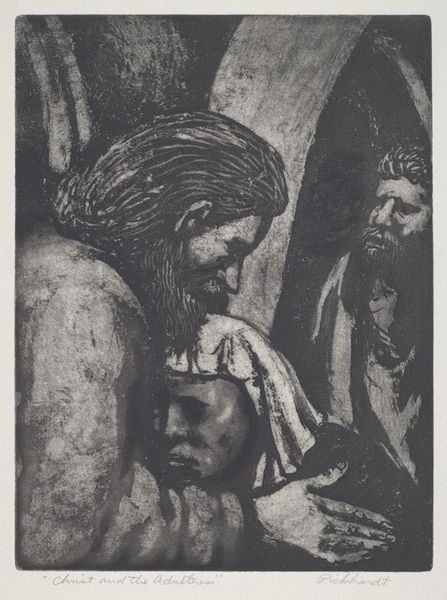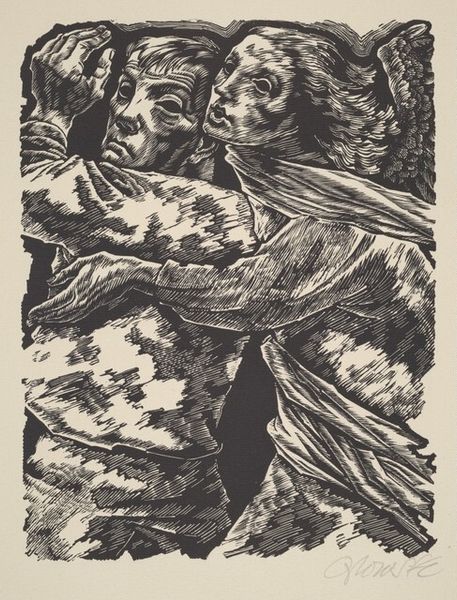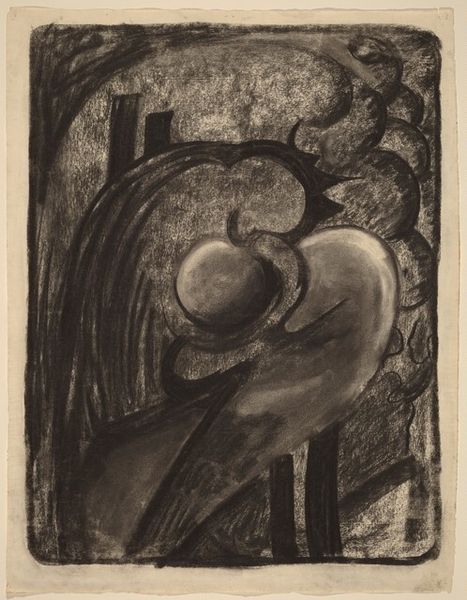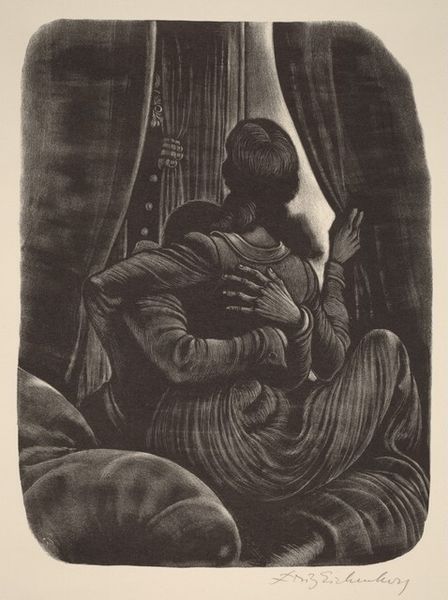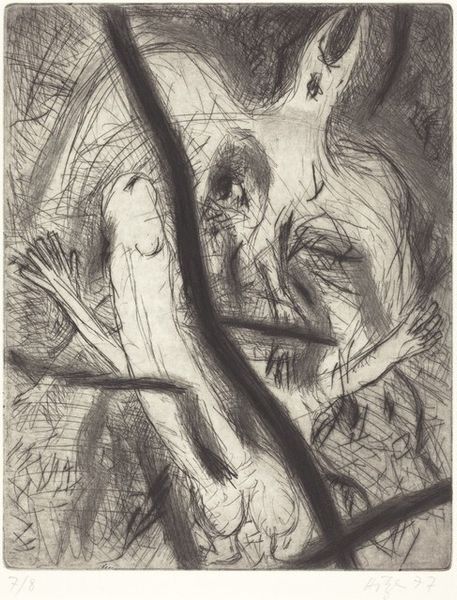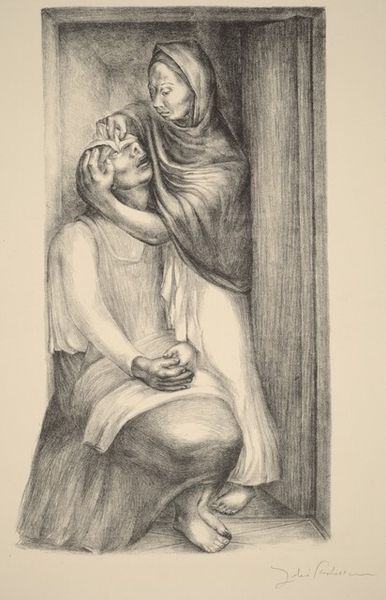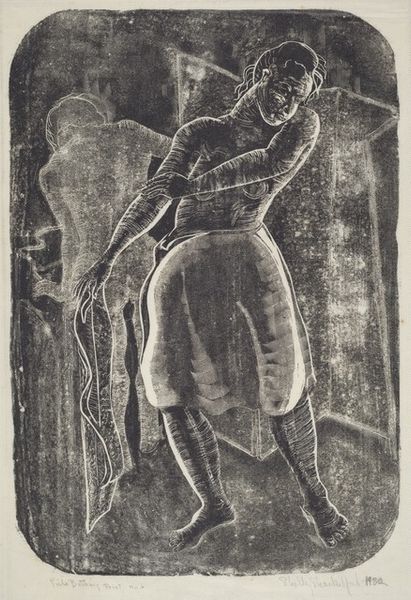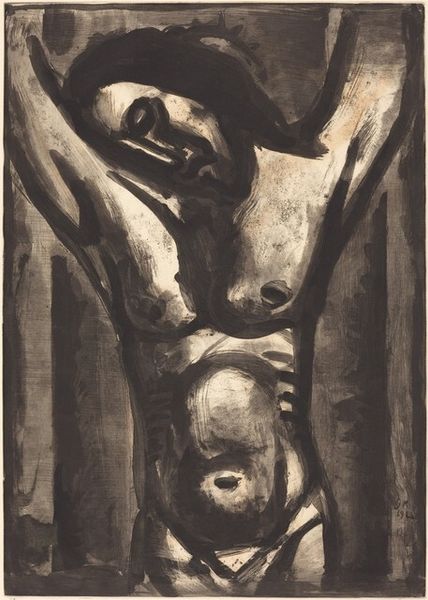
graphic-art, print, etching
#
portrait
#
graphic-art
# print
#
etching
#
figuration
Dimensions: plate: 201 x 126 mm sheet: 260 x 210 mm
Copyright: National Gallery of Art: CC0 1.0
Curator: Veronica Helfensteller's etching, "Manou," from around 1945, immediately strikes me with its shadowy atmosphere. The figures are rendered in a monochromatic palette, heightening the drama. What's your take? Editor: I agree about the immediate impact, and I'm intrigued by the unsettling relationship between the figures. A spectral female form lurks beside the textured plane, her gaze inscrutable, while the dominating hand suggests themes of possession or creation. To understand its deeper layers, we have to look to the world of its time. Consider the shadow of wartime experiences: do you read the distorted human form as an allegory of loss? The faceless features behind a scrim speak to the constraints placed on women at this time. Curator: Absolutely. It's vital we view Helfensteller’s work not in isolation but within the patriarchal structures she encountered. In exploring a figurative style with deeply personal content, "Manou" challenges dominant ideologies around the image and societal position of women. There’s a palpable tension—a visual language hinting at repression and resistance, almost surreal in execution. Now, from a structural perspective, the dominance of line over form plays a role, doesn’t it? Editor: Without a doubt. The etching technique gives a graphic edge, defining contours and creating stark contrasts. This starkness is also emphasized by how the lines around the hand obscure any sign of warmth; instead, this feels like it could become an accusation. Even the textures contribute—from the delicate hatching defining Manou's veiled appearance, to the rougher marks suggesting raw emotional energy from the figure beside her. In the lines, a profound expression of control and artistic intervention seems visible. What is Manou held back from? Curator: So the print operates as a kind of map—a constellation of both personal trauma and systemic oppression rendered through symbolic imagery. Editor: Precisely. By observing this composition, what is foregrounded in sharp relief is the emotional landscape carved by these social, historical, and political conditions.
Comments
No comments
Be the first to comment and join the conversation on the ultimate creative platform.
